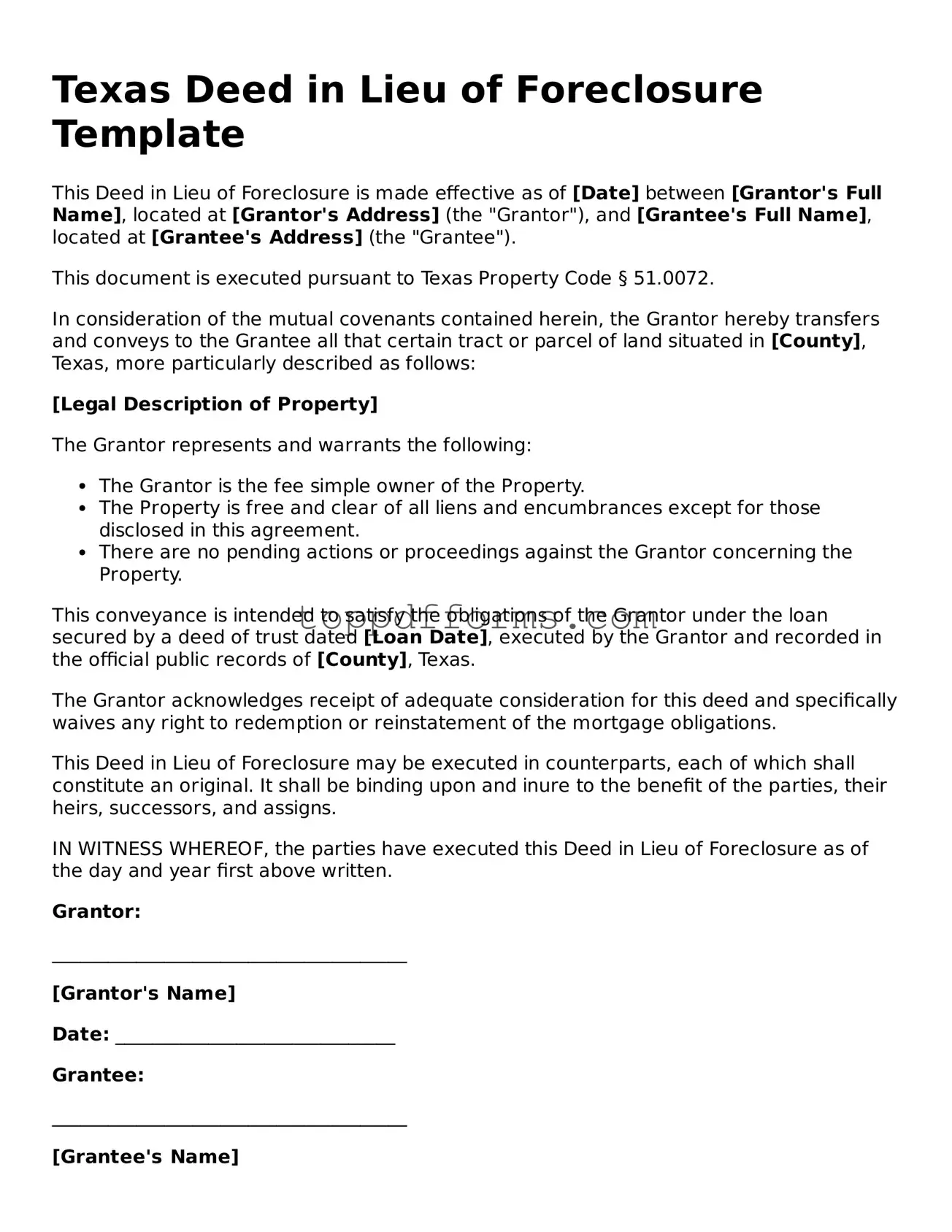What is a Deed in Lieu of Foreclosure?
A Deed in Lieu of Foreclosure is a legal document that allows a homeowner to transfer ownership of their property to the lender in order to avoid foreclosure. This option can help borrowers who are struggling to make mortgage payments and want to prevent the negative consequences of foreclosure on their credit history.
How does the process work?
To initiate a Deed in Lieu of Foreclosure, the homeowner must contact their lender and express their interest in this option. The lender will then review the homeowner's financial situation and the property’s value. If both parties agree, the homeowner will sign the Deed in Lieu, transferring ownership to the lender. The lender may also agree to forgive any remaining mortgage debt, depending on the circumstances.
What are the benefits of a Deed in Lieu of Foreclosure?
One of the primary benefits is that it can help homeowners avoid the lengthy and stressful foreclosure process. Additionally, it may have less of a negative impact on the homeowner's credit score compared to a foreclosure. A Deed in Lieu can also provide a sense of closure, allowing individuals to move forward without the burden of an unpaid mortgage.
Are there any risks involved?
Yes, there are potential risks. Homeowners may still face tax implications if the lender forgives a portion of the debt, as this could be considered taxable income. Additionally, lenders may not agree to a Deed in Lieu if the property has liens or other encumbrances. It is essential to fully understand the implications before proceeding.
Can I still live in my home during this process?
Typically, once the Deed in Lieu is signed and accepted by the lender, the homeowner must vacate the property. However, some lenders may allow a short period for the homeowner to stay in the home after the transfer. It is crucial to discuss this possibility with the lender during negotiations.
What documentation is needed for a Deed in Lieu of Foreclosure?
Homeowners will need to provide various documents, including proof of income, a hardship letter explaining their financial situation, and details about the property. The lender may also require a title search to ensure there are no outstanding liens on the property. Being prepared with all necessary documentation can help streamline the process.
Is a Deed in Lieu of Foreclosure the right choice for everyone?
No, a Deed in Lieu of Foreclosure may not be suitable for everyone. Homeowners should consider their financial situation, the potential impact on their credit score, and any tax consequences. It’s advisable to consult with a financial advisor or attorney to explore all available options and determine the best course of action.
